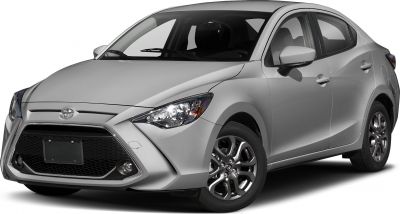 2020 Hyundai Verna V (facelift 2020) Dimensions, Size & Specs
2020 Hyundai Verna V (facelift 2020) Dimensions, Size & SpecsMeasurements of the 2020 Hyundai Verna V, engineered for optimal performance and comfort
| Dimensions | |
|---|---|
| Length: | 4440 mm174.8 in14.6 ft |
| Width: | 1729 mm68.1 in5.7 ft |
| Height: | 1475 mm58.1 in4.8 ft |
| Tire Specifications | |
| Rims Sizes: |
|
| Tire Sizes: |
|
The Hyundai Verna V facelift (2020-2023) is a refined midsize sedan designed to offer a perfect blend of comfort, style, and practicality. Measuring 4440 mm (174.8 inches) in length, 1729 mm (68.1 inches) in width, and standing 1475 mm (58.1 inches) tall, it fits well into the competitive compact sedan segment, providing ample interior space for passengers and luggage alike. The exterior dimensions contribute to its streamlined profile and sophisticated look, making it suitable for urban commuting as well as longer journeys.
Produced from 2020 to 2023, this facelift version of the Verna brought subtle design upgrades and feature enhancements while maintaining its established high standards of reliability and efficiency. Customers can opt for 15-inch or 16-inch rims that complement the car's profile. The tire options include 185/65 R15 and 195/55 R16, providing choices that balance ride comfort and driving dynamics.
The Verna V facelift is built for drivers who value a sedan that is easy to maneuver in city traffic without compromising on road presence or interior roominess. Its moderate width and height ensure good cabin ergonomics with adequate headroom and shoulder space. Overall, the Hyundai Verna V facelift remains a practical and stylish choice in the compact sedan category, with well-balanced dimensions that suit a wide range of driver needs and lifestyles.
Discover the standout features that make the 2020 Hyundai Verna V a leader in its class
Have a question? Please check our knowledgebase first.
The Hyundai Verna V facelift 2020 sedan measures 4440 mm (174.8 inches) in length, 1729 mm (68.1 inches) in width, and 1475 mm (58.1 inches) in height. These dimensions provide a balanced and compact sedan profile that blends urban maneuverability with passenger comfort. The width allows for sufficient shoulder room inside while maintaining ease of driving through city traffic. Its height ensures good headroom for both front and rear passengers. Overall, these dimensions help the Verna V stand out as a practical and stylish sedan in its segment.
Yes, the Hyundai Verna V facelift 2020 fits comfortably within a standard home garage. Standard garages typically have a width of about 2400 mm (94.5 inches) and a length of approximately 4800 mm (189 inches), which provides ample space for the Verna’s 1729 mm (68.1 inches) width and 4440 mm (174.8 inches) length. This allows easy parking and enough clearance on all sides for opening doors and walking around the car. Additionally, the car's height of 1475 mm (58.1 inches) poses no issues with garage door height or overhead fixtures, making the Verna a practical choice for everyday parking.
The Hyundai Verna V facelift's width of 1729 mm (68.1 inches) contributes significantly to its road presence and interior comfort. From an exterior perspective, this width offers a substantial road stance without making the car overly bulky, which enhances both aesthetics and stability. Internally, the width supports spacious seating, providing adequate shoulder room for front and rear passengers. While not as wide as some premium sedans, this balance ensures practicality in tight city environments while not compromising on passenger comfort during longer journeys.
The Hyundai Verna V facelift 2020 comes with two main rim size options: 15-inch and 16-inch alloy wheels. Corresponding tire sizes are 185/65 R15 and 195/55 R16. The 15-inch wheels paired with 185/65 R15 tires deliver a comfortable ride with good road grip and are ideal for daily commuting and higher ride comfort. The 16-inch wheels with 195/55 R16 tires offer a sportier look and slightly improved handling dynamics due to the wider tire profile and lower sidewall. These options allow buyers to select a setup that best suits their driving preferences and road conditions.
The Hyundai Verna V facelift 2020 has a height of 1475 mm (58.1 inches), which strikes a good balance between aerodynamic efficiency and cabin comfort. A lower height generally improves aerodynamic performance by reducing air resistance, which can enhance fuel efficiency and high-speed stability. In the case of the Verna, the moderate height helps maintain a sleek sedan silhouette while ensuring adequate headroom for occupants. This design choice allows for a comfortable interior space without compromising the car's external styling and functional aerodynamics.
The 2020 facelift of the Hyundai Verna V carries forward the core dimensions of its predecessor, maintaining a similar footprint with minor refinements in styling rather than drastic size changes. The length of 4440 mm (174.8 inches), width of 1729 mm (68.1 inches), and height of 1475 mm (58.1 inches) remain largely consistent when compared to the pre-facelift model. These dimensions ensure continuity in interior space and road handling characteristics. The facelift mainly focused on aesthetic updates, improved features, and technology enhancements rather than altering the car's physical size.
The Hyundai Verna V facelift 2020 positions itself competitively in the compact sedan segment with its length of 4440 mm (174.8 inches), width of 1729 mm (68.1 inches), and height of 1475 mm (58.1 inches). When compared to rivals like the Honda City, Maruti Ciaz, or Toyota Yaris, it holds a middle ground — neither the largest nor the smallest. This size balance delivers practicality for urban driving while ensuring adequate interior space. The Verna's dimensions offer an appealing combination of style, comfort, and maneuverability, making it a strong contender in its class.
The compact yet thoughtfully designed dimensions of the Hyundai Verna V facelift 2020 translate into an interior that comfortably seats five passengers with ample headroom and legroom. The 1729 mm (68.1 inches) width supports well-spaced seating, while the height of 1475 mm (58.1 inches) helps maintain good vertical space inside the cabin. The 4440 mm (174.8 inches) length allows for a reasonably sized trunk space to accommodate luggage for typical family or personal use. Overall, the dimensions contribute to a balanced cabin environment prioritizing comfort, passenger ergonomics, and cargo practicality.
The Hyundai Verna V facelift 2020 offers two primary rim sizes: 15-inch and 16-inch, paired with tire sizes 185/65 R15 and 195/55 R16 respectively. The 15-inch setup, with taller tire sidewalls, tends to provide a softer, more comfortable ride by absorbing road imperfections better, which is ideal for rough urban roads. The 16-inch wheels, featuring wider and lower-profile tires, improve handling and cornering stability due to increased grip and reduced sidewall flex. However, the trade-off can be a slightly firmer ride. This choice allows buyers to prioritize either comfort or sportier dynamics.
While specific curb weight figures can vary depending on trims and engine options, the Hyundai Verna V facelift 2020 typically weighs between 1,150 to 1,250 kg (approximately 2,535 to 2,755 lbs). This weight range strikes a balance between structural robustness, safety, and fuel efficiency. A moderately lightweight sedan like the Verna improves fuel economy by requiring less energy to move, while also enhancing overall handling and acceleration. Hyundai’s engineering ensures that despite the weight, the Verna delivers responsive performance with its efficient powertrains, making it practical and economical for everyday use.
Discover similar sized cars.

| Production: | 2001-2006 |
|---|---|
| Model Year: | 2002 |
| Length: | 4375 mm172.2 in |
| Width: | 1710 mm67.3 in |
| Height: | 1470 mm57.9 in |

| Production: | 2017-2020 |
|---|---|
| Model Year: | 2017 |
| Length: | 4425 mm174.2 in |
| Width: | 1730 mm68.1 in |
| Height: | 1475 mm58.1 in |

| Production: | 2016-present |
|---|---|
| Model Year: | 2016 |
| Length: | 4425 mm174.2 in |
| Width: | 1730 mm68.1 in |
| Height: | 1475 mm58.1 in |

| Production: | 2014-2017 |
|---|---|
| Model Year: | 2015 |
| Length: | 4390 mm172.8 in |
| Width: | 1927 mm75.9 in |
| Height: | 1467 mm57.8 in |

| Production: | 2019-2021 |
|---|---|
| Model Year: | 2019 |
| Length: | 4450 mm175.2 in |
| Width: | 1760 mm69.3 in |
| Height: | 1520 mm59.8 in |

| Production: | 2017-2020 |
|---|---|
| Model Year: | 2018 |
| Length: | 4440 mm174.8 in |
| Width: | 1729 mm68.1 in |
| Height: | 1475 mm58.1 in |

| Model Year: | 2015 |
|---|---|
| Length: | 4440 mm174.8 in |
| Width: | 1729 mm68.1 in |
| Height: | 1475 mm58.1 in |

| Production: | 2014-2016 |
|---|---|
| Model Year: | 2014 |
| Length: | 4375 mm172.2 in |
| Width: | 1700 mm66.9 in |
| Height: | 1470 mm57.9 in |
